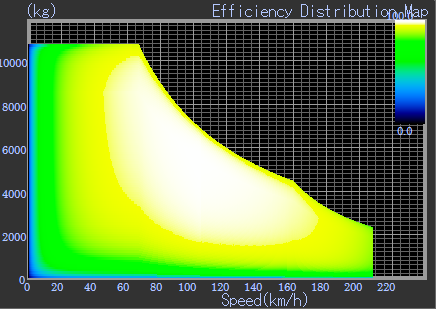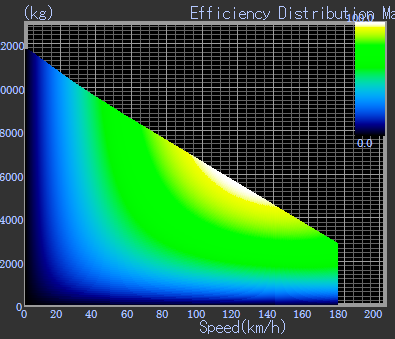Power Source
Transmission
Feature
Electricity

Recently the permanent magnet motor technology and advanced semiconductor materials such as iii-nitrides and sic increase the train efficiency even more.
Just like a reciprocating steam engine, some kind of electric motor can drive axle directly without any reduction gear.
Diesel
The energy loss of this direct drive mode is small over the wide range of speed.
As a result, the required hydraulic converter capacity is small and then the weight of total transmission is lighter than the full hydraulic system.
The number of shifting steps influences the acceleration and more steps, more fitting to the ideal constant output curve.
But the switching gears suspends the acceleration and cause the time loss. To make its minimum, additional devices such as PDK are required.
The switching gears also damages transmission system in the high output system and requires very precise revolution control or hydraulic coupling.
Gas Turbine
Recent gas turbines are relatively efficient but still worse than diesels. Especially at part load and idling. Recuperated gas turbines can improve this to some extent but don't reach diesels.
The combined cycle or humid air gas turbine can achieve the efficiency over diesels but many merits of gas turbine, compact and light weight, easy operability are lost and not suitable for vehicles.
The high speed revolution of the gas turbine requires sophisticated reduction gears. Also its high volume air flow and high frequency noise require somewhat large air intake and exhaust duct and silencer.
A split shaft gas turbine can achieve the stall torque ratio 2 or more and if 150% over revolution limit is allowed, the starting tractive effort is nearly 4 times against the top speed. Early turbine cars used these characteristics to remove multi-speed gearbox or hydraulic converter from the car.

Gas turbines can also be equipped with multi-speed gearboxes to
improve the low speed tractive effort, low speed energy inefficiency and
high noise level at stall. M1 Abraham tank and Y2K turbine bike are
equipped with this system.
This is prominent especially when the turbine is directly coupled to the high speed alternator. This combination enables very high power density electric generation system.
